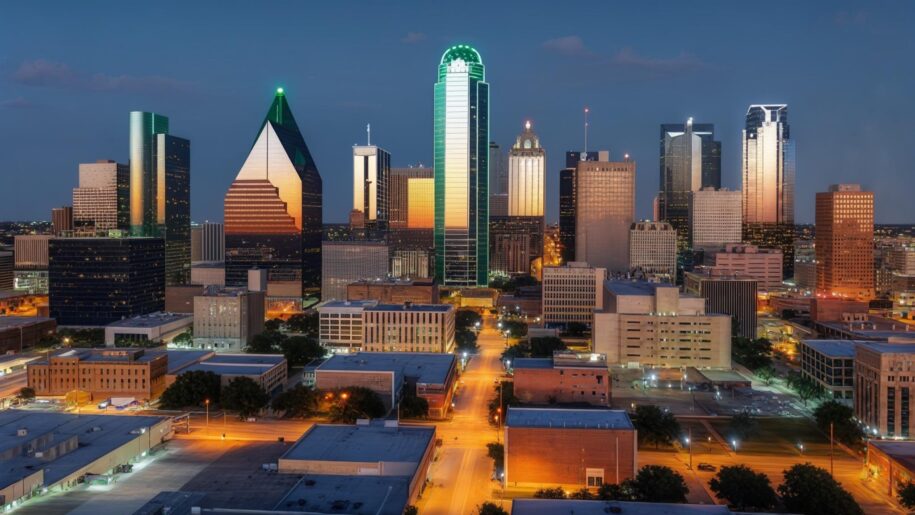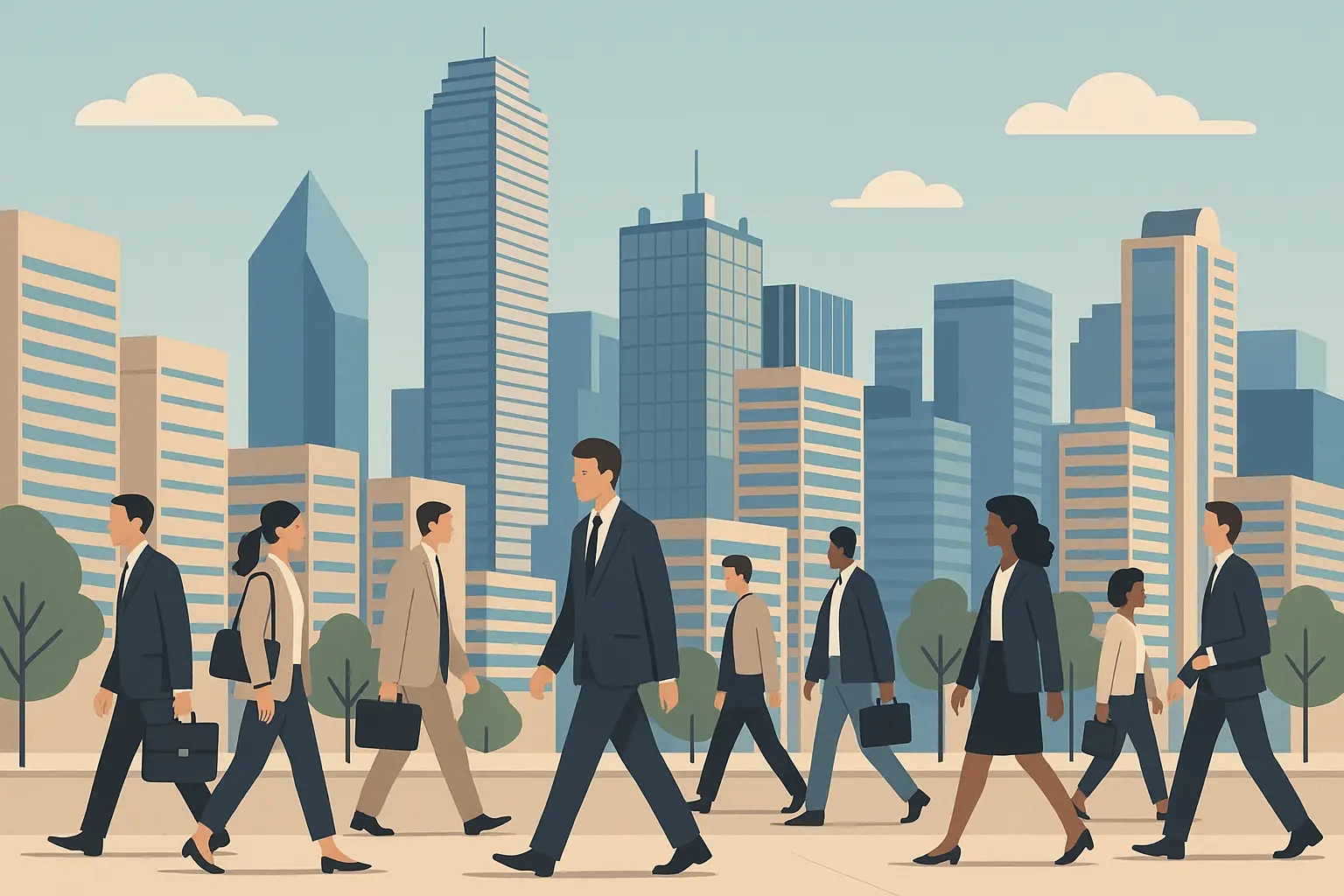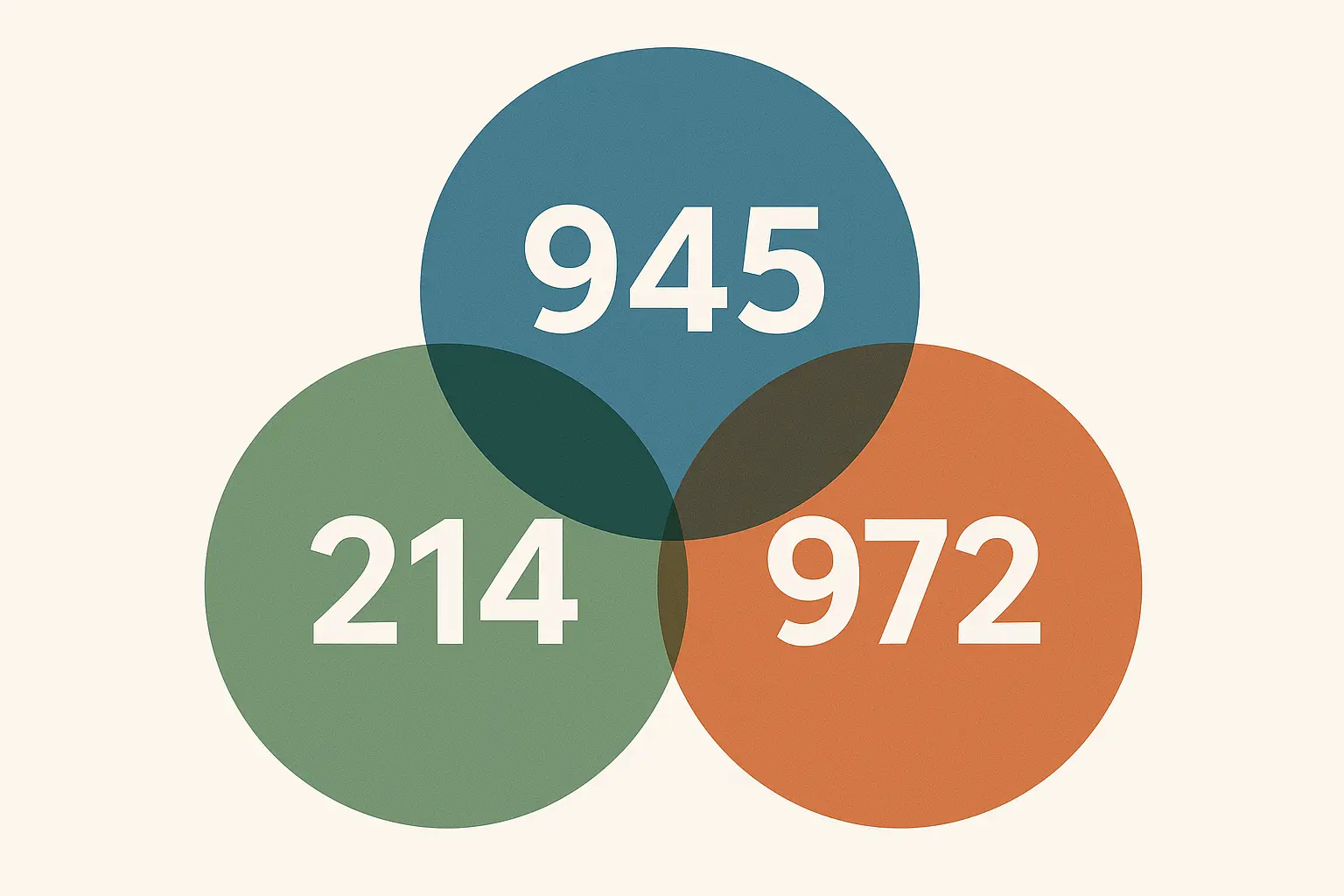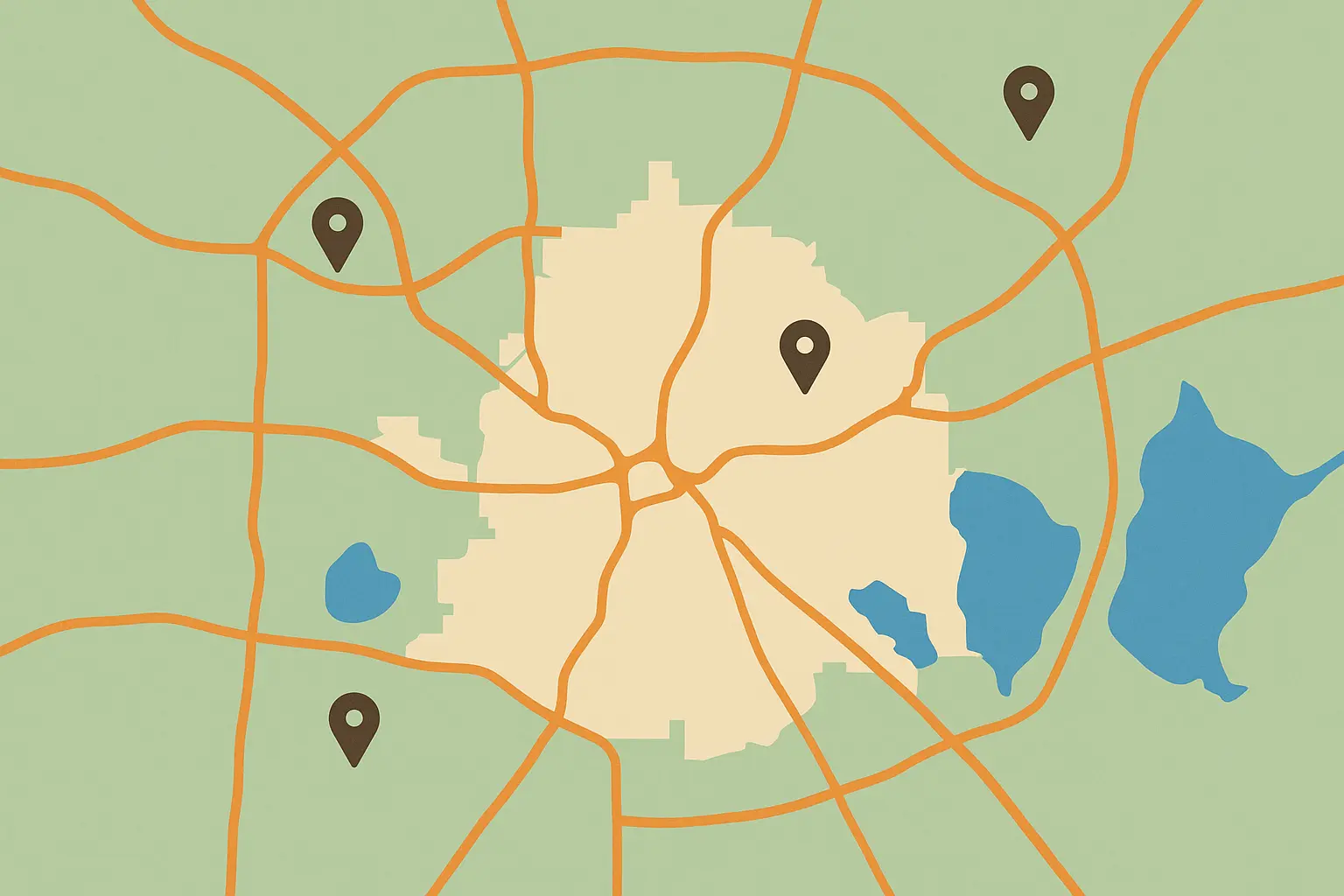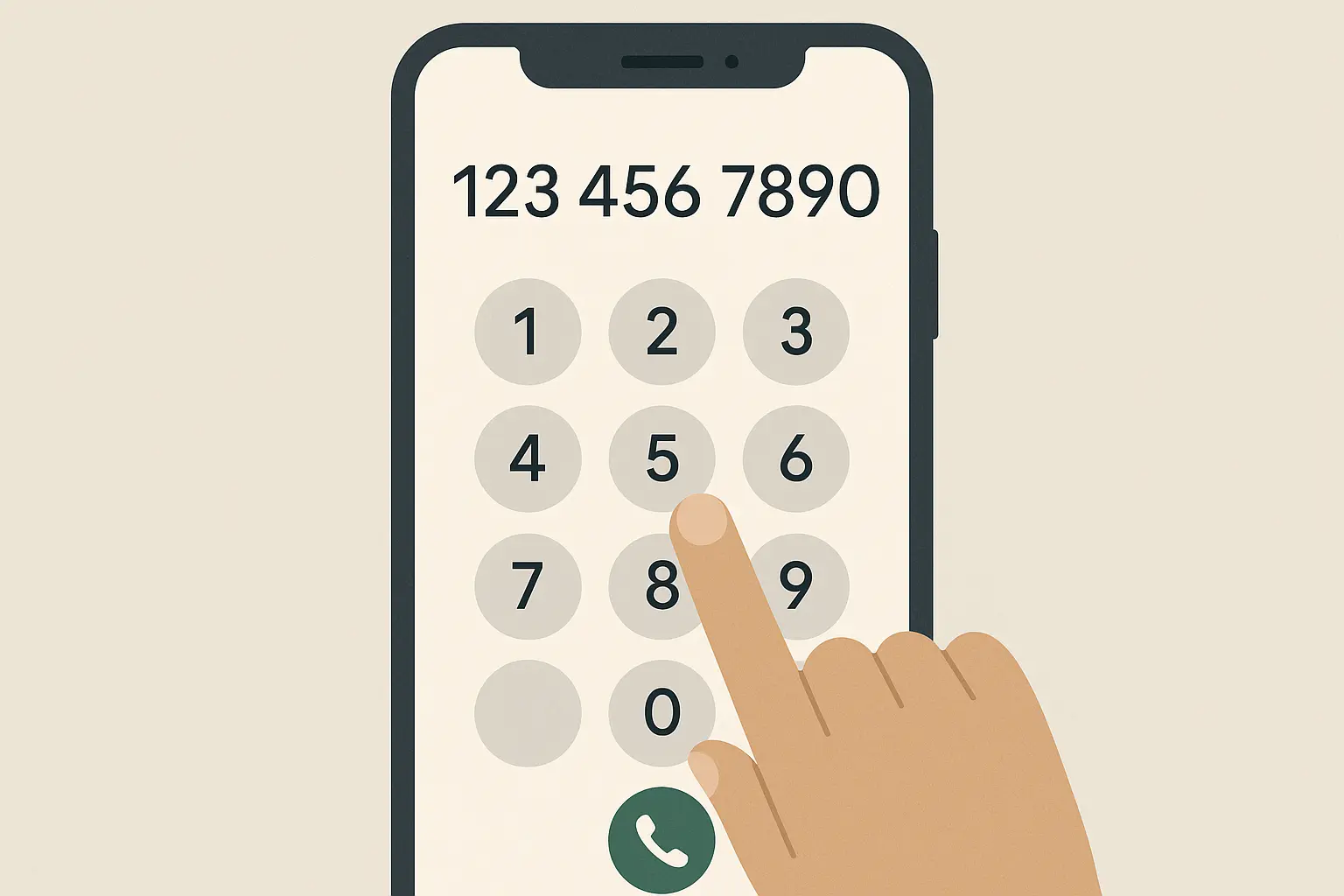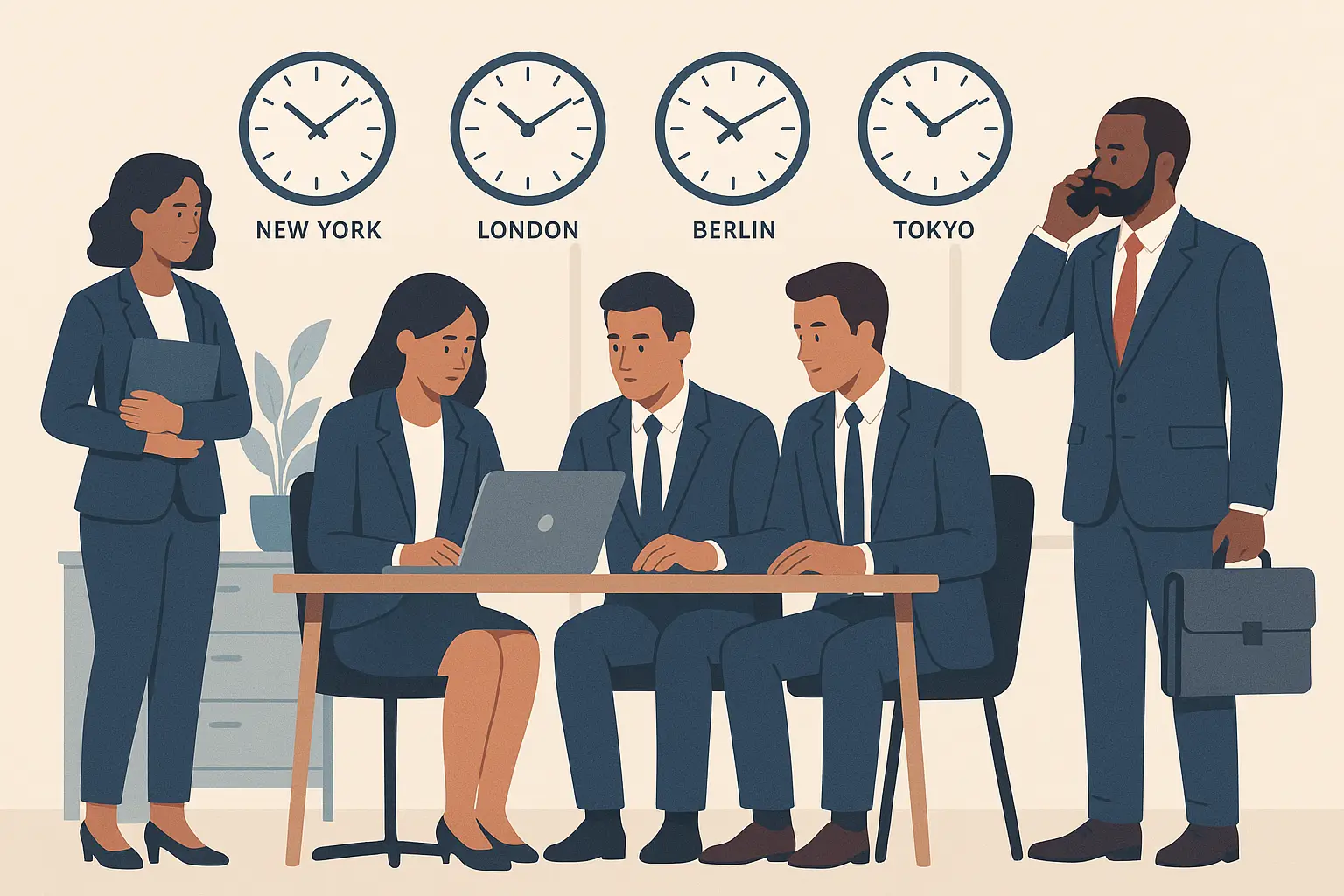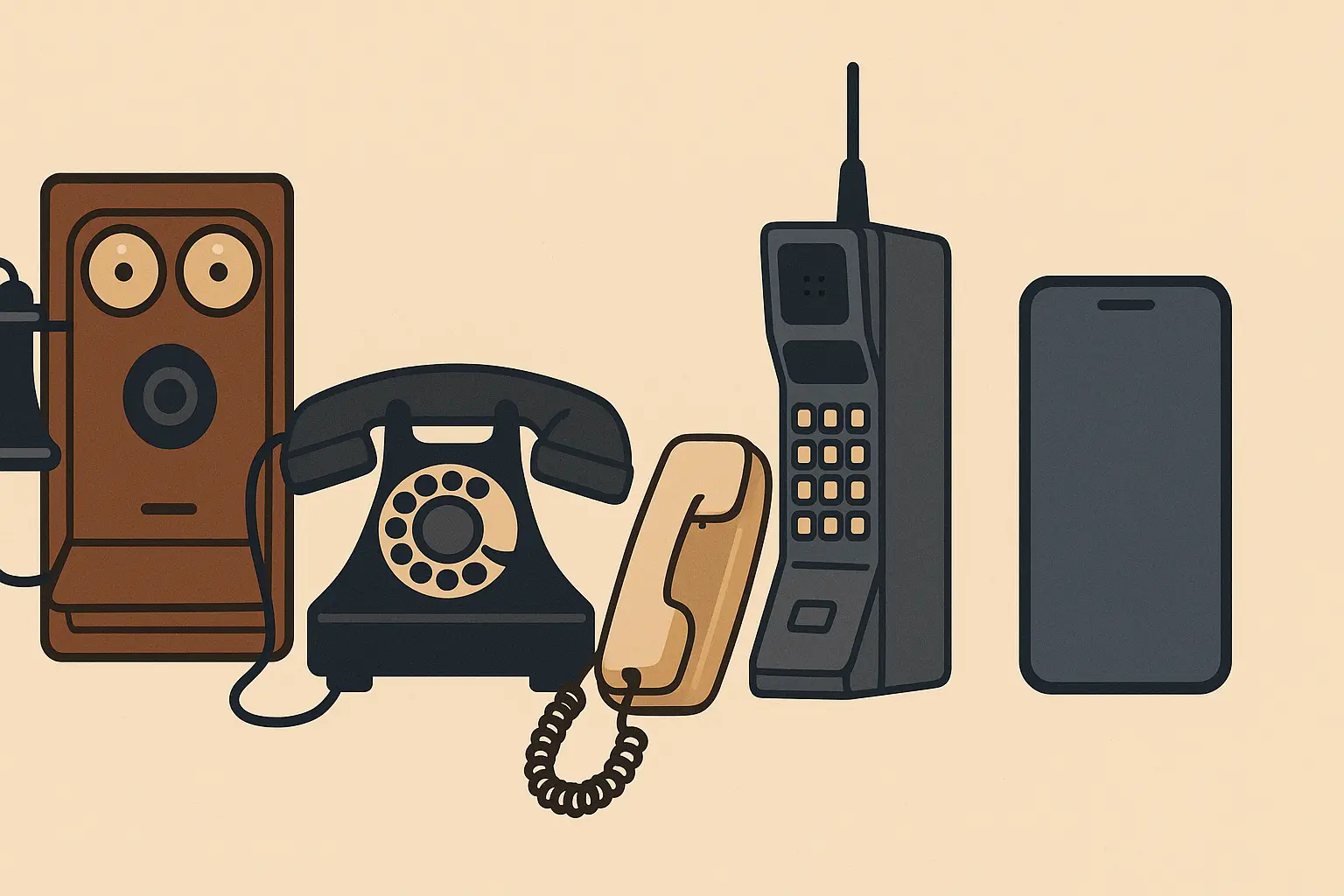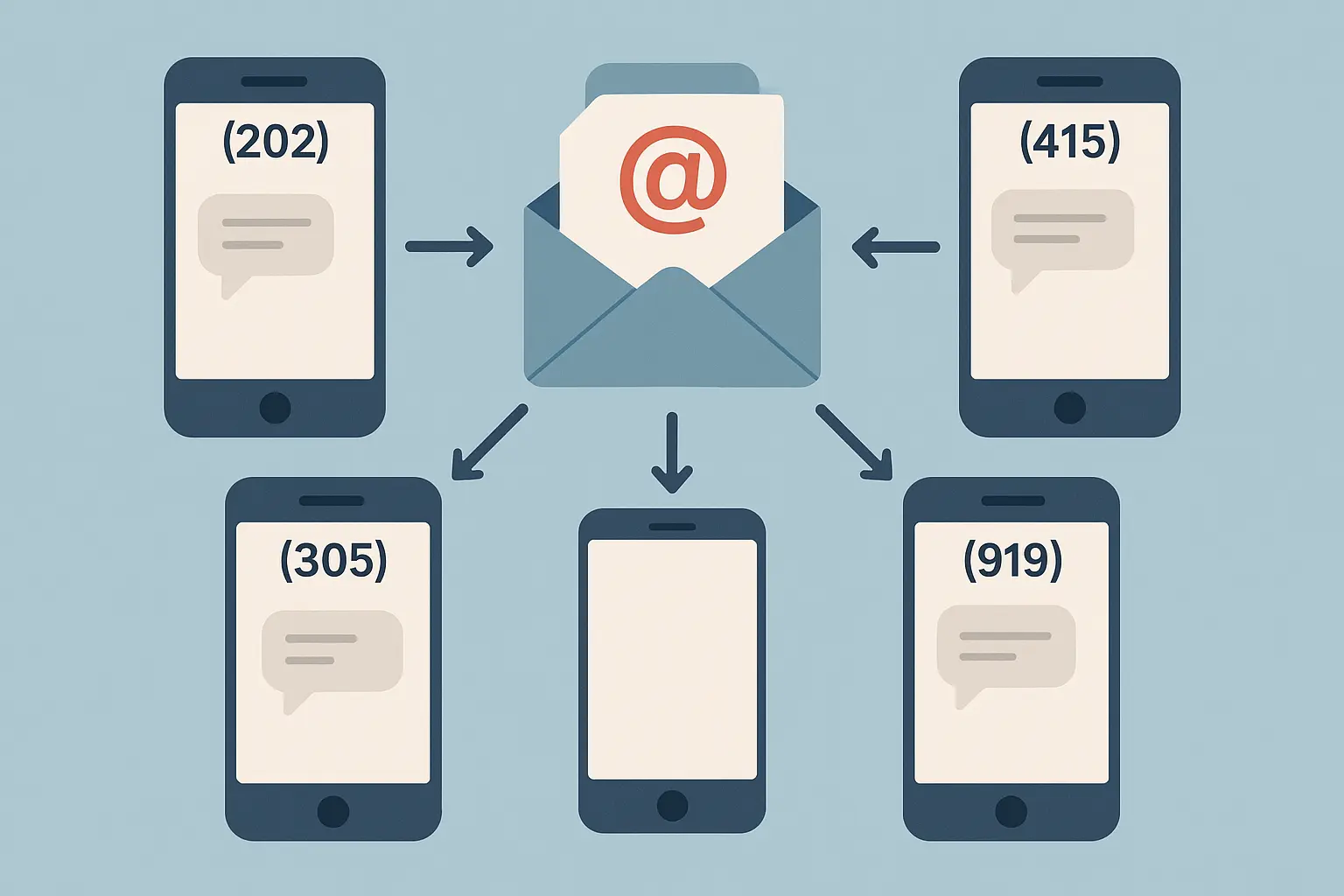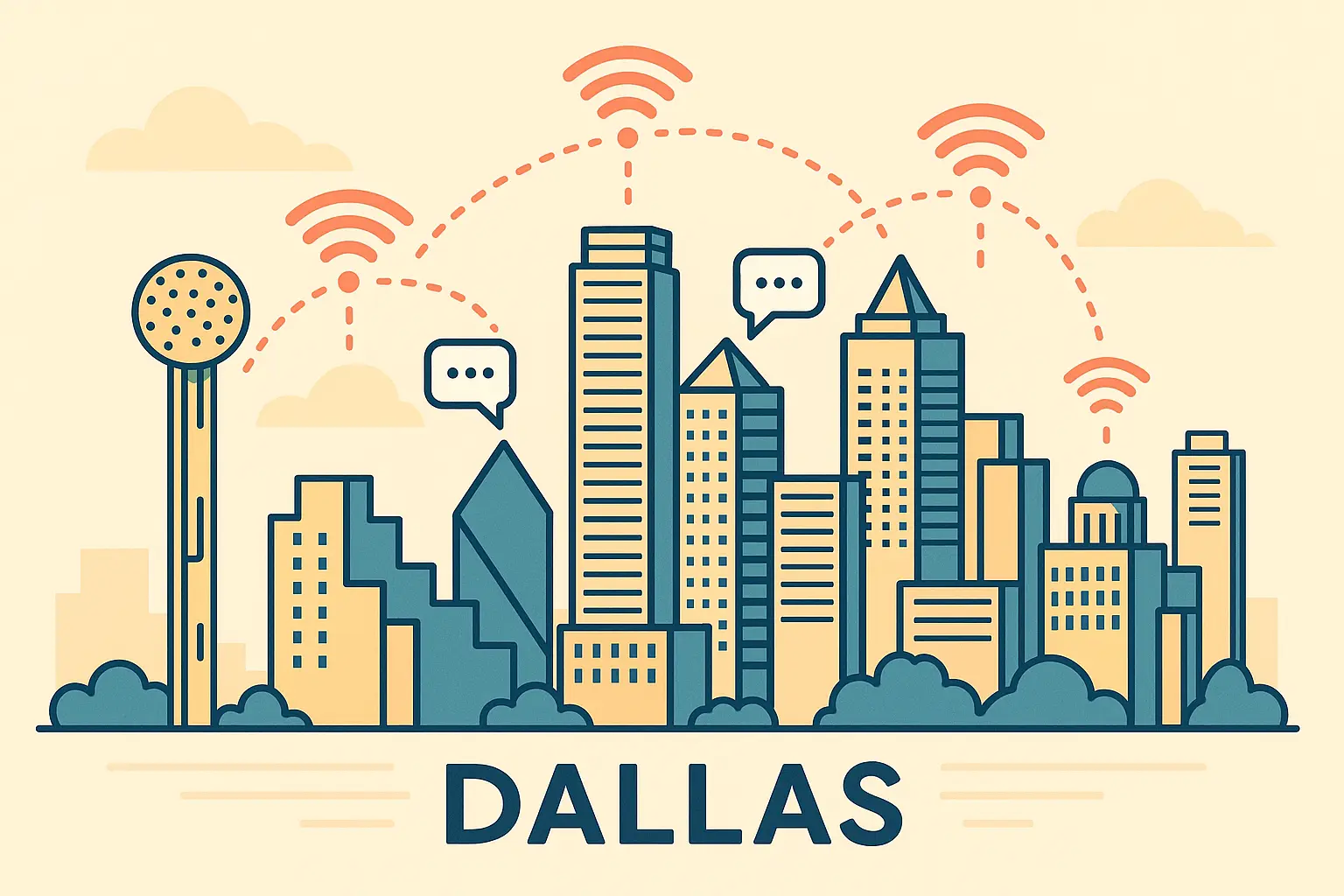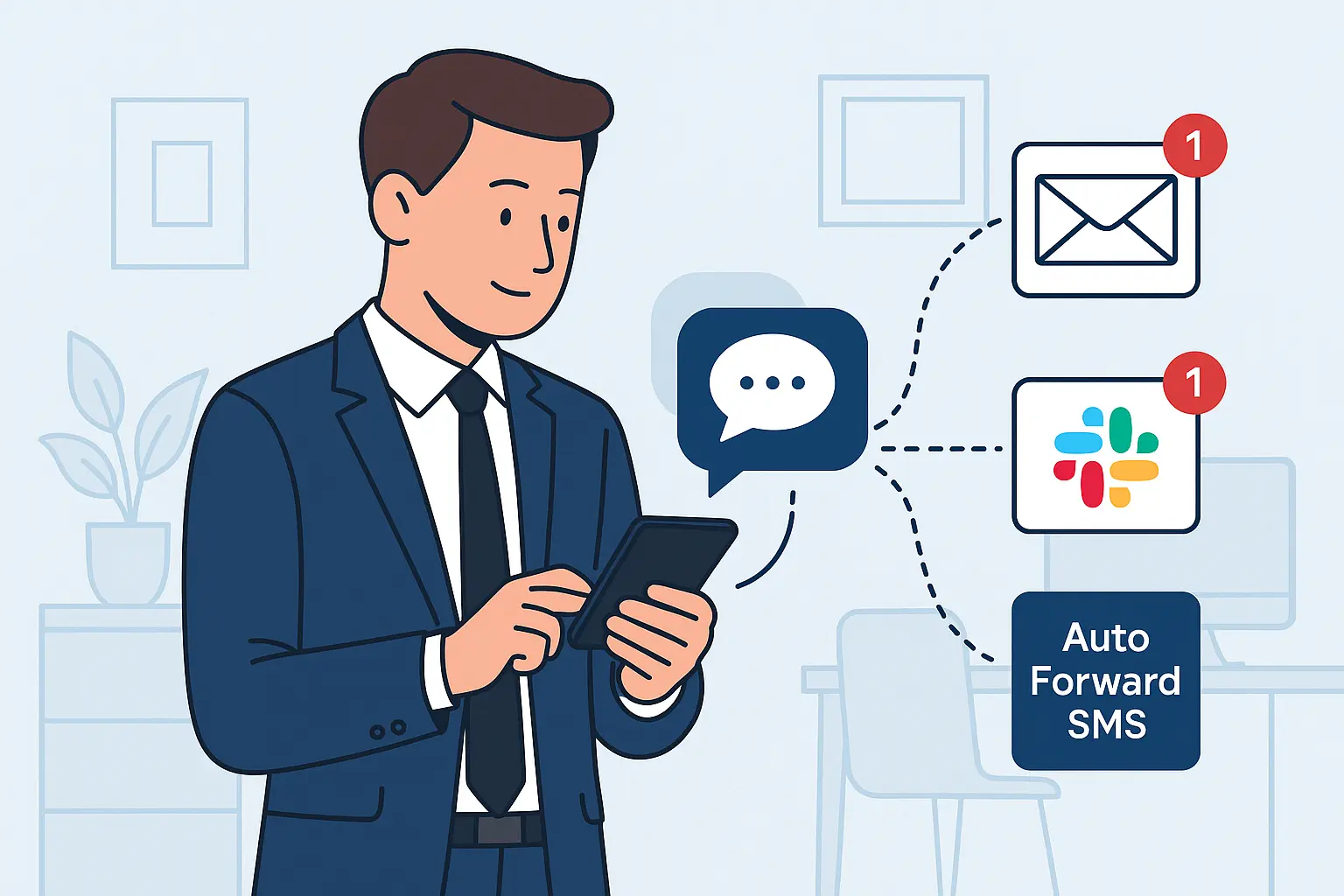If you’ve ever wondered why some Dallas phone numbers carry more clout than others, you’re about to find out. The 214 area code isn’t just three digits—it’s Dallas royalty, and there’s a whole world of telecommunications secrets that locals take for granted.
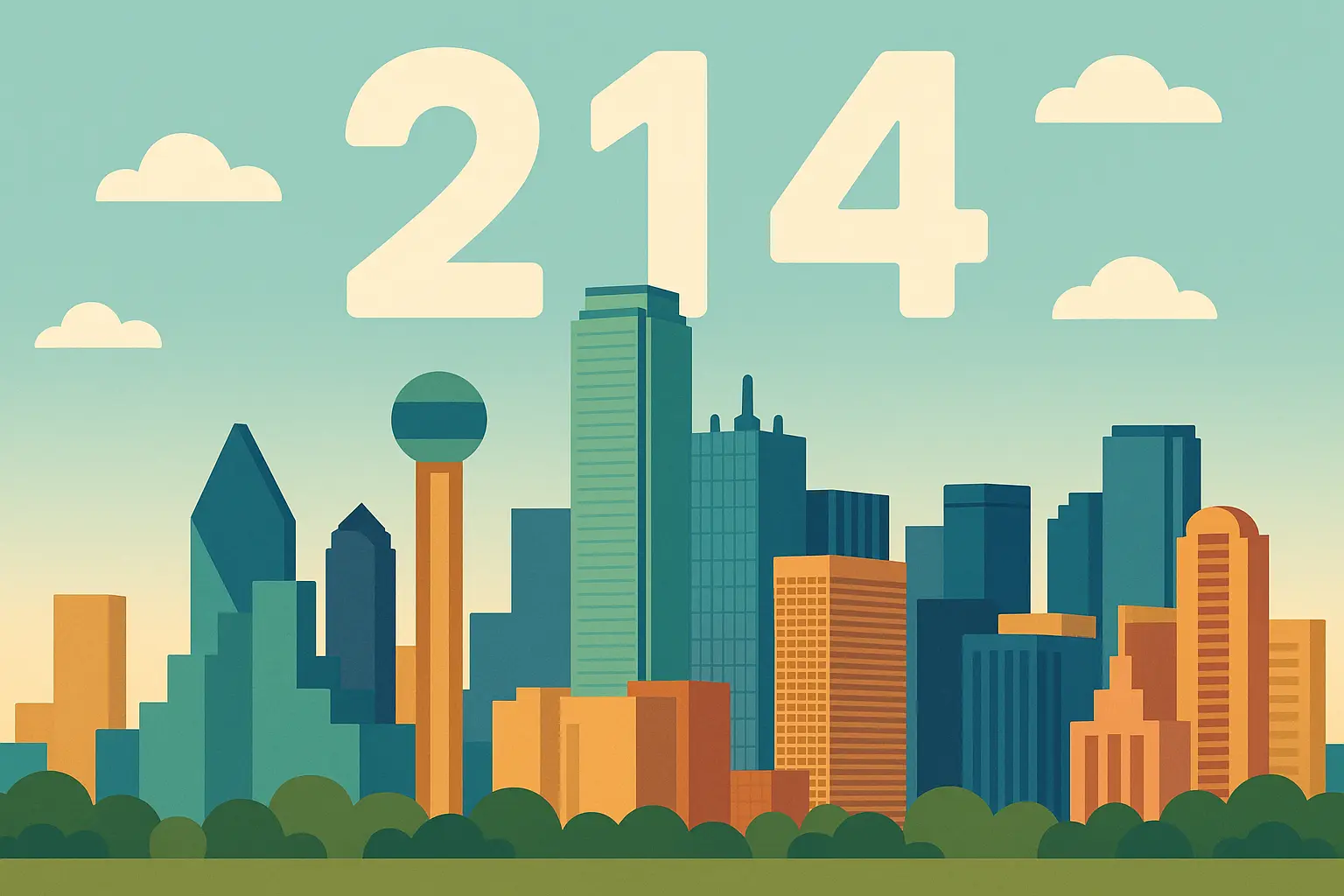
According to Intelius data, the 214 area code covers roughly 2,960,663 phone numbers, with Dallas Riverside being the largest city within this region, boasting a population of about 2,600,840. This original Dallas identifier has become synonymous with the city’s identity and economic power.
Table of Contents
Table of Contents
-
The Real Story Behind Dallas’s Crown Jewel
-
Why Geography Actually Matters Here
-
The Dialing Disaster Nobody Talks About
-
Time Zone Truth That Affects Your Business
-
The History That Shaped Everything
-
Why the New 945 Area Code Changes Nothing
-
Business Implications Nobody Mentions
-
How Auto Forward SMS Simplifies Dallas Communications
-
The Bottom Line
TL;DR
-
Having a 214 number in Dallas is like having a Manhattan address—it screams prestige
-
You MUST dial 10 digits for every call, even to your neighbor, thanks to the overlay system
-
The area code covers Dallas’s economic heart including downtown and historic neighborhoods
-
Central Time Zone positioning creates perfect business advantages between coasts
-
214 maintains its prestigious status even as Dallas adds more area codes
-
The overlay system exists to handle explosive population growth without forcing number changes
The Real Story Behind Dallas’s Crown Jewel
Here’s what most people don’t know: having a 214 number in Dallas is like having a Manhattan address in New York. It screams “I was here first, and I matter.”
Since 1947, this area code has covered Dallas’s beating heart—downtown, the Arts District, and those tree-lined neighborhoods where old money lives. When the North American Numbering Plan started, Dallas got 214, and we’ve been proud of it ever since.
According to ZipAtlas data, this area boasts a median family income of $107,170 and a total population of 3,918,207 people. These aren’t just statistics—they represent the financial muscle that makes Dallas a major player in the national economy.
Downtown Dallas: Where Power Lives
Walk through downtown Dallas, and you’re walking through 214 territory. This isn’t coincidence—it’s the economic powerhouse of North Texas. The Arts District alone has more cultural venues than entire cities can claim.
Financial corridors stretch through downtown, housing everything from major banks to energy companies. Companies with 214 numbers often use this as a subtle way to signal their established presence in the market. The West End Historic District tells the story of Dallas’s evolution from a frontier town to a major metropolitan center.
I’ve noticed that when someone mentions their Dallas number is 214, they’re essentially saying they’re part of the original Dallas story. It’s not just about telecommunications—it’s about belonging to the city’s authentic core.
The Neighborhoods That Actually Matter
Lakewood residents will casually drop their 214 number into conversation because they know what it means. Same with East Dallas and the White Rock Lake area. These aren’t just phone numbers—they’re proof you belong to “real Dallas,” not some suburban afterthought.
I’ve talked to longtime residents who see their 214 number as a badge of honor. It connects them to Dallas before the sprawl, when the city had character and grit. Certain neighborhoods have maintained their 214 status since the 1940s, and residents wear this designation with pride.
The White Rock Lake vicinity particularly stands out because it represents Dallas at its most livable. These neighborhoods combine urban convenience with a more relaxed pace, and their 214 numbers serve as a reminder of the city’s residential heritage.
Why Geography Actually Matters Here
Here’s where it gets interesting: the boundaries don’t follow city limits or zip codes. They follow old telecommunications infrastructure and historical assignments. Your business could be on Mockingbird Lane with a 214 number, while your competitor three blocks north gets stuck with 972.
The Crown Jewels and Their Boundaries
The northern boundaries extend to areas near Love Field Airport, creating fascinating overlap zones. A business located on Mockingbird Lane might have a 214 number, while their competitor just a few blocks north on Northwest Highway could have a 972 or 469 number.
Eastern boundaries typically follow major thoroughfares and municipal lines, while western limits align with Dallas city boundaries and highway systems. Major highways often serve as unofficial boundary markers, though there are plenty of exceptions to this pattern.
This geographic proximity with different area codes often confuses customers about which businesses are “truly Dallas” versus suburban locations. The 214 coverage extends into some surprising areas while excluding others that seem like they should be included.
University and Medical District Dynamics
Key institutional areas within Dallas fall under 214 coverage, creating interesting dynamics for students, faculty, and medical professionals. Portions near Southern Methodist University maintain the 214 designation, connecting the academic community to Dallas’s telecommunications heritage.
The medical district presents a more complex picture. Healthcare professionals often prefer 214 numbers for their practices because patients associate them with established, trustworthy Dallas institutions.
The Dialing Disaster Nobody Talks About
Here’s where Dallas gets complicated: we have three area codes (214, 469, 972) serving the same areas, plus a new one (945) that just launched. This overlay system means you can’t just dial seven digits anymore—not even to call next door.
Everyone dials 10 digits for everything now. Period. Even locals mess this up sometimes, automatically dialing seven digits out of habit, only to get that annoying recording telling them to hang up and try again.
Ten Digits for Everything
If you’re calling your neighbor who lives three houses down and both of you have 214 numbers, you still must dial the full 10-digit number: 214-555-1234. Many longtime Dallas residents still accidentally dial just the seven digits out of habit.
The complexity will remain unchanged with the new 945 area code implementation. According to NBC DFW, “Customers in the overlay region will continue to dial 10 digits for local calls within and between the overlay area codes, and 1+10 digits for long distance calls.”
For businesses struggling with these dialing complexities, understanding the US phone number format with country code becomes essential when setting up automated systems to handle 214 communications properly.
How the Overlay System Actually Works
This means that neighbors on the same street might have completely different area codes. I’ve seen this firsthand—houses side by side with 214, 469, and 972 numbers. The 214 designation often goes to established businesses and longtime residents, while newer numbers typically receive 469 or 972 assignments.
|
Call Type |
Dialing Required |
Example |
|---|---|---|
|
Local within same area code |
10 digits |
214-555-1234 |
|
Local to different overlay code |
10 digits |
469-555-1234 |
|
Long distance |
1 + 10 digits |
1-214-555-1234 |
|
Emergency services |
3 digits |
911 |
|
Directory assistance |
3 digits |
411 |
The 214 area maintains a certain prestige factor that the other codes haven’t achieved. Local businesses often request 214 numbers specifically because customers associate them with established Dallas companies.
Time Zone Truth That Affects Your Business
Being in Central Time is actually Dallas’s secret weapon. We start our day catching up with New York, then stay late to connect with Los Angeles. It’s perfect for business—if you know how to use it.
According to ZipAtlas data, 70.0% of people in the labor force within the 214 region are actively working—that’s 2,130,701 people. Coordinating business communications across time zones becomes a critical operational consideration for Dallas-based companies with this many active professionals.
The Strategic Advantage
The Central Time position puts Dallas one hour behind the East Coast and two hours ahead of the West Coast. This positioning affects everything from meeting scheduling to customer service hours, but smart businesses have learned to embrace this instead of fighting it.
The downside? Early morning calls with the East Coast and late evening West Coast communications. However, this also means Dallas businesses can start their day with East Coast partners already in full swing, then extend their afternoon to catch West Coast colleagues.
Managing time-sensitive communications across zones becomes easier when Dallas businesses utilize solutions like forwarding text messages to a Slack channel, ensuring team members in the 214 area stay connected regardless of when messages arrive.
The region observes daylight saving time, transitioning between Central Standard Time and Central Daylight Time annually. These transitions affect business operations and communication scheduling throughout the year, particularly for companies with automated systems.
The History That Shaped Everything
Back in 1947, Dallas was a different beast. One area code could handle the entire region because, frankly, there wasn’t that much to handle. Fast forward to today, and we need multiple codes just for the core metro area.
The real turning point came in 1996 when Dallas outgrew what 214 could manage. Instead of expanding the coverage area, they split off 972. Then came 469 as an overlay to prevent another disruptive split that would force people to change their numbers.
From Regional Center to Metropolitan Powerhouse
Each change reflected Dallas’s explosive growth. What started as a regional center became a major metropolitan powerhouse, and the telecommunications infrastructure had to scramble to keep up.
Originally, 214 covered a much larger geographic area, including parts of what are now separate area codes. The progression from 214 as the sole area code to the current overlay system reflects Dallas’s population and economic expansion over nearly eight decades.
I’ve watched this evolution firsthand, and each phase brought its own challenges. The 214 area code maintained its prestige throughout these changes, becoming even more valuable as it became harder to obtain.
Why the New 945 Area Code Changes Nothing
Just when you thought you had Dallas area codes figured out, they threw us 945 in January 2024. But here’s the thing—it doesn’t really change the game for 214 holders.
According to NBC DFW, “North Texas is getting a new area code.” The 945 area code launched January 15th as the sixth area code for North Texas, joining 214, 817, 682, 469, and 972 in serving the greater Dallas region.
The new code works the same way as the overlay system we already have. You still dial 10 digits for everything. The only difference is that new customers might get assigned 945 numbers instead of 469 or 972.
For businesses, this means even more complexity in managing customer communications across four different area codes serving the same geographic region. The overlay system will continue as Dallas isn’t done growing, which means we’re not done adding area codes.
Business Implications Nobody Mentions
The Marketing Edge
Let’s be honest about something locals won’t admit: 214 numbers carry weight. Customers unconsciously trust businesses with 214 numbers more than those with 469 or 972. It signals establishment, longevity, and local credibility.
Local businesses discovered something interesting: customers respond differently to 214 numbers versus the other codes. There’s an unconscious trust factor that comes with the original Dallas area code.
Real estate agents, law firms, and medical practices often specifically request 214 numbers because they signal establishment and local credibility. It’s subtle, but in a competitive market, every advantage matters. New businesses often request 214 numbers specifically, though they’re getting harder to find.
Customer Service Challenges
Managing a business across multiple area codes creates operational headaches. Customer databases need to account for four different codes serving the same city. Phone systems require configuration for the 10-digit dialing requirement.
The complexity multiplies when you’re trying to track which customers called from which numbers, especially when running marketing campaigns targeted to specific Dallas neighborhoods.
Many Dallas companies are learning how to forward text messages on an Android phone to streamline their messaging across the 214 area code and its overlays.
How Auto Forward SMS Simplifies Dallas Communications
For businesses trying to manage communications across all these area codes, the complexity is real. Messages come from customers with 214, 469, and 972 numbers, and keeping track becomes a nightmare.
Auto Forward SMS provides solutions for handling messages from multiple area codes, ensuring you never miss important communications regardless of whether customers contact you from 214, 469, or 972 numbers. This becomes particularly valuable when you’re managing a business that serves the entire Dallas metroplex.
Managing the Multi-Code Chaos
Auto Forward SMS helps Dallas-area businesses streamline their text message management by automatically forwarding messages from any of the local area codes to designated email addresses or team collaboration tools like Slack. This eliminates the confusion of managing communications across the overlay system.
Businesses new to automated SMS management can benefit from getting started with AutoForward SMS for the first time, especially when dealing with the complexity of the 214 area code overlay system in Dallas.
The area code complexity makes automated solutions almost necessary for busy professionals. I’ve seen too many important messages get lost because someone couldn’t keep track of which phone was receiving texts from which area code.
Reliable Message Delivery
For Dallas-based businesses operating in the Central Time Zone, Auto Forward SMS ensures important communications are captured and forwarded even during network connectivity issues common in busy metropolitan areas. This reliability is particularly valuable for mobile businesses operating throughout the diverse 214 region.
Dallas’s urban environment can create connectivity challenges, and having automated forwarding provides peace of mind. The 214 area businesses I work with appreciate having a backup system that ensures message delivery regardless of network conditions.
The Bottom Line
The 214 area code isn’t going anywhere, and its prestige will only grow as Dallas continues expanding. Whether you’re a longtime resident or new to the area, understanding these telecommunications realities will save you daily frustration.
The 214 area code represents more than just a telecommunications identifier—it’s a badge of honor for Dallas’s core metropolitan area. Understanding its geographic coverage, overlay system complexities, and practical implications helps you navigate both personal and business communications more effectively.
If you’re lucky enough to have a 214 number, treasure it. If you don’t, at least now you know why some Dallas phone numbers get more respect than others. The overlay system might seem complicated at first, but it’s designed to serve the region’s continued growth and prosperity.
The Technical Reality Behind It All
The overlay system exists because Dallas’s telecommunications infrastructure couldn’t handle the demand with just one area code. Rather than geographically splitting the region (which would force number changes), they layered new codes over the same territory.
This solution prevents customer disruption but creates the dialing complexity we deal with daily. It’s a trade-off between convenience and technical necessity that reflects the practical challenges of managing a rapidly growing metropolitan area.
Emergency services had to adapt their systems to handle calls from multiple area codes in the same geographic location. While 911 still works the same way, the backend systems needed updates to properly route calls and identify locations across the overlay zones.
What This Means for Your Future
Dallas isn’t done growing, which means the pattern will likely continue—new overlay codes added as demand exceeds supply, maintaining the same geographic coverage but adding more dialing complexity.
For anyone doing business in Dallas, understanding this telecommunications landscape isn’t optional anymore. It affects everything from customer communications to marketing strategies to operational procedures.
The 214 area code will continue to hold its prestigious position as Dallas’s original identifier, but the surrounding complexity will only increase as the metroplex continues its expansion. Smart businesses and residents are already adapting their systems and expectations to handle this reality.
Key Takeaways for Dallas Communications:
-
Always use 10-digit dialing format in all business materials
-
Understand that 214 carries prestige value in local markets
-
Prepare for additional area codes as Dallas continues growing
-
Consider automated solutions for managing multi-code communications
-
Embrace Central Time Zone positioning for national business advantages
For businesses managing communications across Dallas’s multiple area codes, tools like Auto Forward SMS can eliminate the complexity and ensure you never miss important messages, regardless of which number customers use to reach you.
The telecommunications landscape of Dallas reflects the city’s dynamic growth and economic importance. While the complexity might seem overwhelming at first, it’s simply the price of success for one of America’s most vibrant metropolitan areas.
